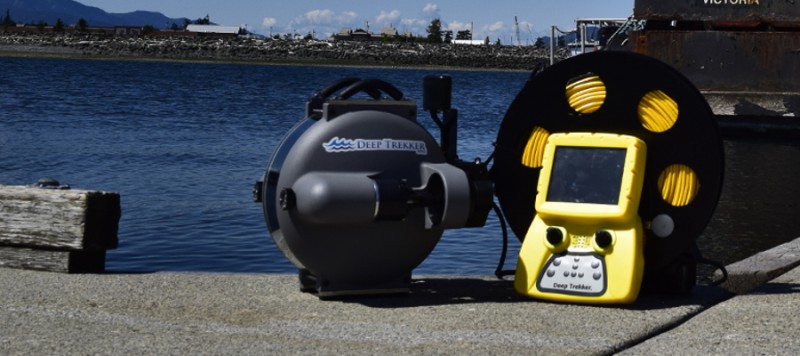Configure Now
Items in Your Cart0
0Items in Your Cart
Start building your packageShop Now
In previous posts, we've explored why hull inspections are important and have examined the challenges and costs that vessel owners encounter maintaining a ship. We’ve looked at issues such as the transfer of contraband attached to hulls and the inadvertent delivery of invasive species into new waters.
Frequent inspections of your hull are vital to reduce corrosion, prevent contraband trading, control invasive species transfer, and identify abrasions and problems developing on the bottom of one’s ship. Frequent inspections help control costs. Traditional, relatively expensive inspection methods such as divers or dry docking often result in less frequent inspections. Resulting deterioration of hull integrity will eventually create expensive maintenance challenges.
Deep Trekker's remotely operated vehicles (ROVs) can be the perfect inspection solution for ship owners and operators. For more information on maintaining your hull's integrity, follow the link here.
Today we are looking at the ultimate hull inspection package from Deep Trekker. You know that you need a new and cost effective tool to assist in keeping your hull in tip top condition. Deep Trekker can create the perfect ROV package with a number of fantastic add-ons and options for all of your unique hull inspection needs.

The DTG2 Smart package provides users with 75 meters of tether and sensor pod capabilities. Optional sensors allow operators to view the ROV's depth, heading and pitch and the water temperature on the ROV's handheld viewing screen. These added capabilities assist in making it the perfect tool for frequent and effective hull inspections. Recognizing where the ROV is located in the water is easy with the DTG2 Smart package.
 Lightweight but robust wheels can sometimes assist with navigating the DTG2 ROV on and near a variety of surfaces. They can easily be attached or removed by the operator at any time. Attaching the crawler wheels to the top of your ROV allows for smooth sailing across a ship’s hull. When adding the crawler wheels to your ROV for hull inspections, adjust the ballast of the ROV to be a little light so that it slowly rises in the water. This ensures that when you are under the hull, the ROV wheels settle nicely against the ship's exterior. Maintaining a constant depth and consistent image is easier with crawler wheels.
Lightweight but robust wheels can sometimes assist with navigating the DTG2 ROV on and near a variety of surfaces. They can easily be attached or removed by the operator at any time. Attaching the crawler wheels to the top of your ROV allows for smooth sailing across a ship’s hull. When adding the crawler wheels to your ROV for hull inspections, adjust the ballast of the ROV to be a little light so that it slowly rises in the water. This ensures that when you are under the hull, the ROV wheels settle nicely against the ship's exterior. Maintaining a constant depth and consistent image is easier with crawler wheels. surfaces and structures. Deep Trekker's thickness gauge can test the thickness of metal to see if it is taking place. Frequently checking the status of a hull’s metal thickness can ensure that operators identify and address corrosion before it reaches a point where repairs or hull integrity become too challenging or expensive.
surfaces and structures. Deep Trekker's thickness gauge can test the thickness of metal to see if it is taking place. Frequently checking the status of a hull’s metal thickness can ensure that operators identify and address corrosion before it reaches a point where repairs or hull integrity become too challenging or expensive. Auxiliary Side Facing Cameras
Auxiliary Side Facing CamerasFind out what ROV package is right for your next hull inspection
There you have it: The Ultimate Hull Inspection Package.
July 30th, 2021
Learn all about remotely operated vehicle pilots: how to become one,...
November 5th, 2024
Learn more about what sonar is and its many uses. Read...
December 23rd, 2021
ROVs and sonar can be used to inspect underwater structures such...